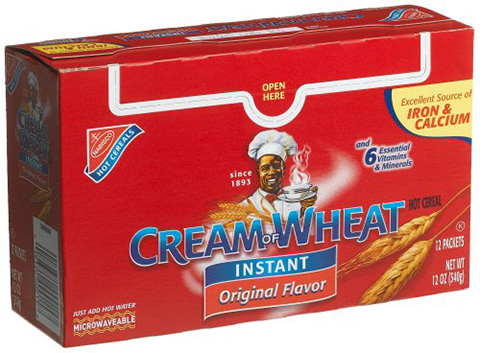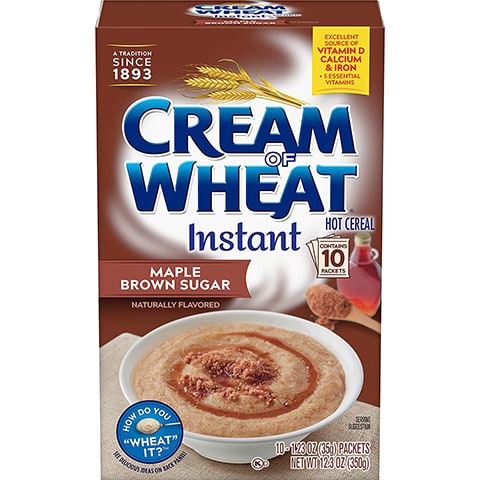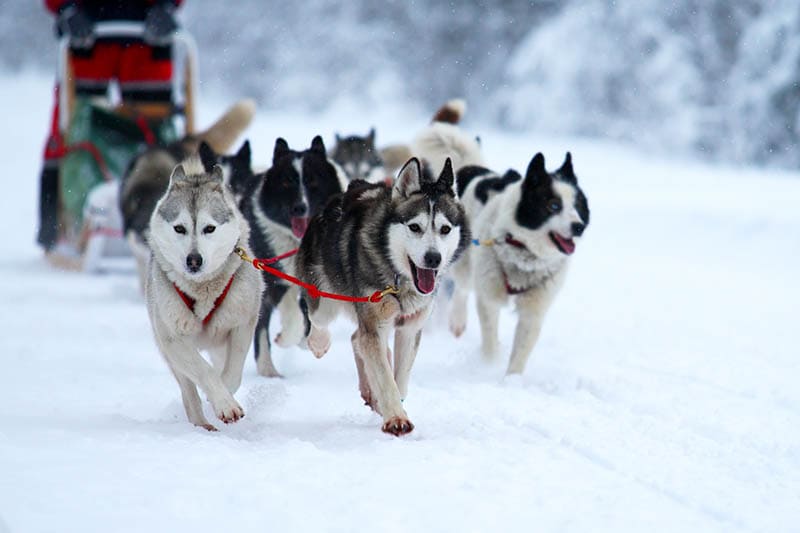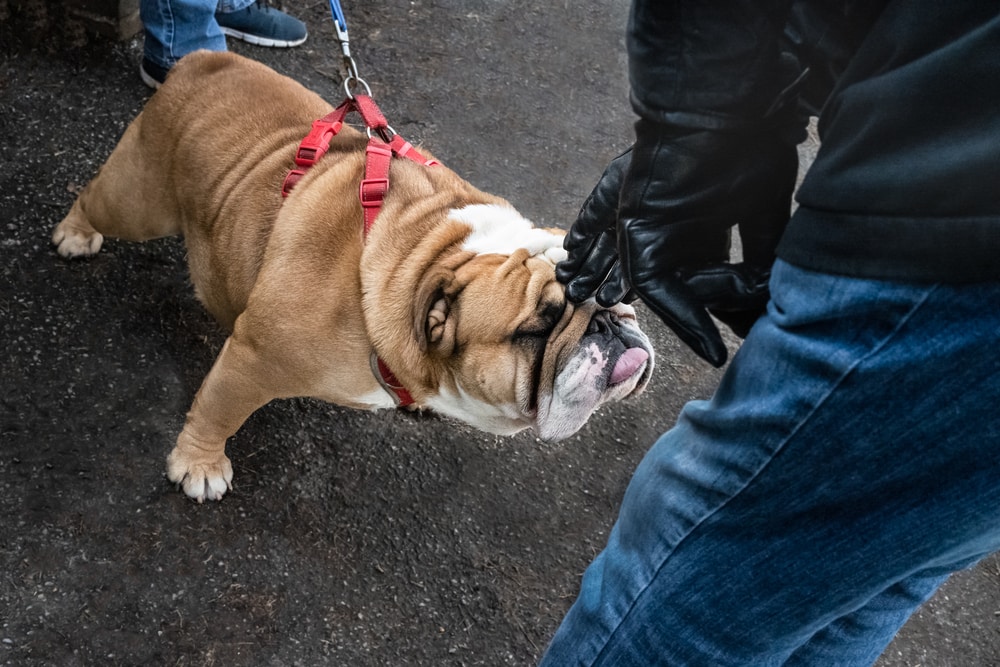Can Dogs Eat Cream of Wheat? Vet Approved Advice
Updated on
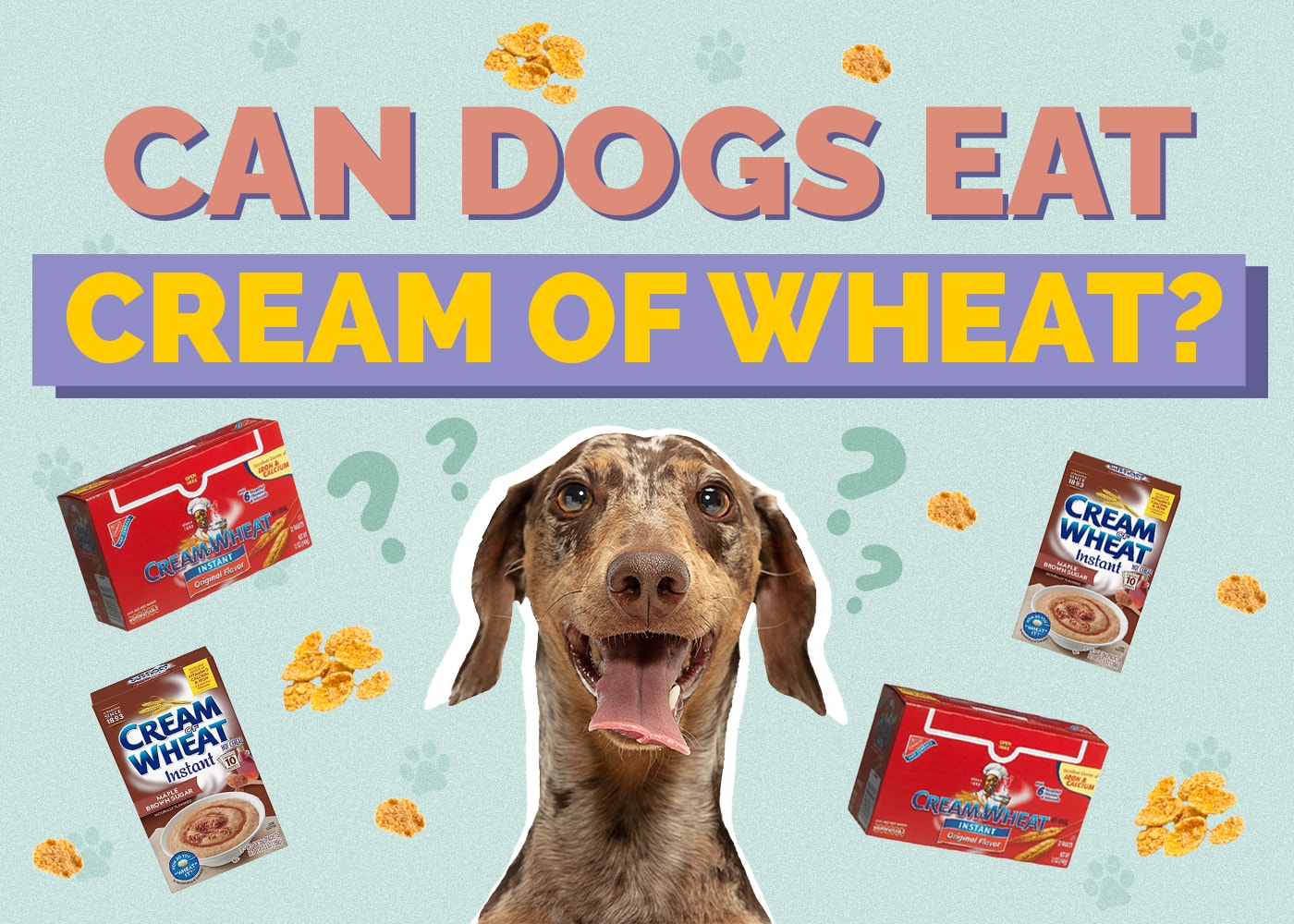
As dog lovers, we should always be aware of what people foods pose a risk to our beloved companions and which ones are safe for them to eat. Cream of Wheat is a popular and delicious hot breakfast cereal that is rich in several key nutrients and is easily customized to one’s desire – but is it something you can share with your dog?
The truth is, it’s never advised to feed your dog human foods unless otherwise directed by your veterinarian. However, plain Cream of Wheat is safe for dogs to eat even though it’s high in carbohydrates, provided they don’t have a wheat allergy. While it is rich in nutrients, your dog should be getting all of their nutritional needs through their regular diet, so there’s no real need to feed them Cream of Wheat as part of their regular diet or as a snack.
Added Ingredients to Avoid in Cream of Wheat
Cream of Wheat is often mixed with water and can be served plain, but most people choose to customize it to their liking by adding various flavorings, fruits, or even sugar or artificial sweeteners. This is where you should err on the side of caution when it comes to your dog, as some of these ingredients could cause digestive upset, an allergic reaction, or even toxicity.
Dog owners need to understand what human foods are safe and unsafe for their dogs. Here’s a list of the most common additives to Cream of Wheat that are best avoided for the pups:
Milk
Cream of Wheat is most often added to water, but some may choose to add milk. Many dogs suffer from lactose intolerance, which means they are either partially or completely unable to digest lactose. Lactose is a sugar found in milk and other dairy products and is one of the leading causes of food intolerance in canines.1
Lactose intolerance happens when the small intestine does not produce enough lactase, which is a digestive enzyme needed to properly digest lactose. Lactose may be naturally occurring in the milk of the mother dog and puppies will produce excess lactase to break down the milk, but this production will slow and sometimes stop as the puppy ages.
Lactose-intolerance can present differently from dog to dog. Some dogs may only show signs when drinking milk but not when consuming other dairy sources like yogurt, cheese, or butter. Other dogs may show signs of intolerance regardless of the dairy product they consume, and some may seem unbothered altogether.
- Loose stools
- Diarrhea
- Gas
- Bloating
- Vomiting
- Abdominal pain
Added Sugar
There’s nothing wrong with letting your dog snack on certain foods that have naturally occurring sugars like fruit or vegetables, but owners should avoid feeding their dogs anything with added sugar, which is found in many human foods you find in the grocery store.
Sugar isn’t toxic to your dog but consuming excessive amounts of sugar isn’t good and can lead to obesity and a variety of health conditions including diabetes and heart disease.
Chocolate
Certain Cream of Wheat varieties will come pre-flavored with chocolate. It’s pretty common knowledge that chocolate is toxic to dogs.2 Owners should never let their dogs eat chocolate or leave it out unattended. Chocolate poisoning is rarely ever fatal but can lead to varying degrees of illness if eaten. The bigger the quantity, the more severe the side effects.
Theobromine is the main toxin in chocolate and the amount of theobromine varies depending on the type of chocolate. The small amount found in Cream of Wheat is not going to contain high amounts of theobromine, but it still shouldn’t be offered to your dog.
- Vomiting
- Diarrhea
- Panting
- Increased thirst
- Rapid heart rate
- Excessive urination
- Muscle tremors (severe cases)
- Seizures (severe cases)
- Heart failure (severe cases)
Xylitol
An ingredient that is often found in or added to many human products is xylitol. This artificial sweetener is used to create sweetness without all the sugar and carbohydrates. Xylitol is incredibly toxic to dogs and owners should use extreme caution if this ingredient is present in any foods or beverages in the house.3 If you add xylitol products containing xylitol to your Cream of Wheat, keep it far away from your pups.
Xylitol is a sugar alcohol that is found naturally occurring in berries, plums, corn, oats, mushrooms, lettuce, trees, and some other fruits.4 Most xylitol found in grocery stores and online is derived from corn fiber and birch trees. If dogs consume it, it leads to a rapid decrease in blood sugar levels, which can cause organ damage and organ failure, and could even be fatal.
Signs of xylitol toxicity typically occur about 30 minutes after consumption and will be related to low blood sugar. If your dog ever accidentally ingests xylitol, you need to contact your veterinarian immediately.
- Vomiting
- Lethargy
- Weakness
- Stumbling/Incoordination
- Collapse
- Seizures
- Coma/Death
What If My Dog Has a Wheat Allergy?
It’s not uncommon for dogs to suffer from some form of food allergy or intolerance. The most common sources of food allergies in dogs include dairy, beef, chicken, chicken eggs, soy, or wheat gluten.5 It’s hard to tell the exact source of a food allergy without performing an elimination diet under the supervision of your veterinarian.
If it has been determined that your dog has an allergy or sensitivity to wheat, you will want to avoid ever offering them Cream of Wheat, as it could result in a variety of uncomfortable symptoms that are common with food allergies including:
- Itchiness
- Red, inflamed skin
- Digestive discomfort
- Diarrhea
- Vomiting
- Recurring ear and/or skin infections (if fed regularly)
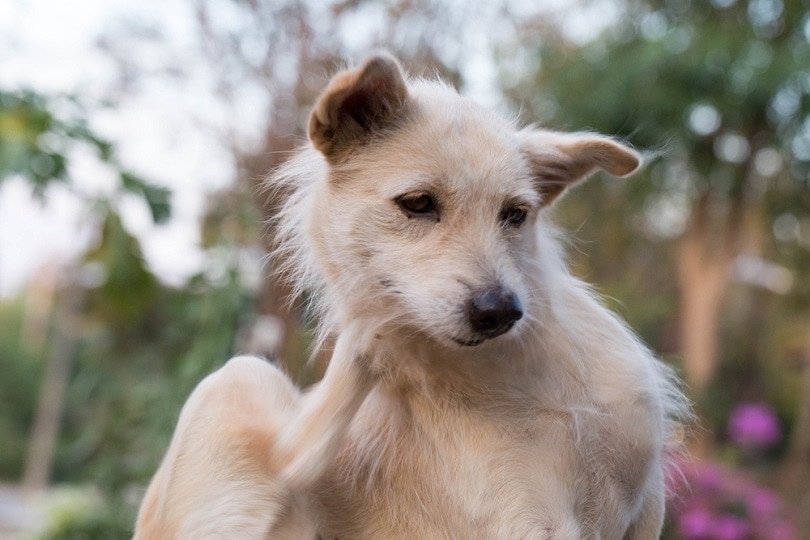
Tips for Feeding Your Dog a Healthy Diet
Aside from avoiding human foods as a regular snack, there are plenty of other ways you can ensure your dog is getting the most from their regular diet. We’ve included some tips below that can help you provide your dog with optimal nutrition.
Feed a High-Quality Diet
Nutrition plays a key role in your dog’s overall health and wellness. You should always opt for dog food that is of high quality and appropriate for your dog’s size, age, and activity level. Not only does high-quality food ensure your dog is consuming all their needed vitamins, minerals, and nutrients, but it will promote healthy skin and coat and optimal digestion, as well as boost the immune system.
Feeding a higher quality diet may be more expensive but is more likely to save you money in the long run due to fewer health problems in the future. A low-quality, unbalanced diet will make it much more likely that your dog will experience health issues, especially as they age.
Avoid Unnecessary Ingredients
There is a lot of confusion when it comes to picking the right food for our beloved pets. There is a lot of controversy surrounding certain ingredients and whether or not they should be part of our dog’s diet. You may have noticed that it is often recommended to avoid certain ingredients like artificial preservatives, flavors, dyes, and fillers that are often added to commercial dog foods.
You are likely no stranger to these recommendations, as you’ve probably come across these concerns with human nutrition, too. The best thing you can do is discuss any ingredient concerns with your veterinarian to learn what you should avoid and what you should look for.
Consider Your Dog’s Specific Needs
Not only is a high-quality, nutritionally balanced diet important, but your dog’s specific needs should also be taken into consideration. Make sure you are feeding an age-appropriate food that is suited for your dog’s size and energy expenditure.
If your dog has any allergies or health conditions, talk to your vet about whether a special diet is needed to help manage its issues. Additional supplements and specialty diets may be required under certain circumstances but should never be offered without talking to your veterinarian.
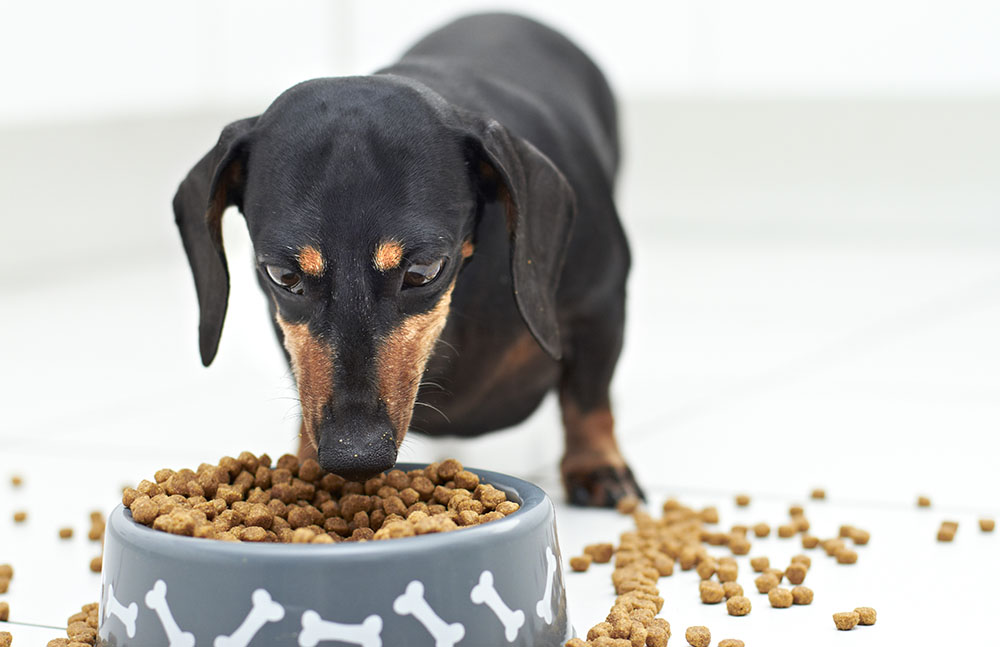
Stick to Dog-Friendly Snacks
Outside of your dog’s regular diet, you are sure to give them the occasional treat. While treats should be used for training and offered sparingly to keep them from becoming overweight, it’s okay to let them indulge in a delicious snack every once in a while, too. The best thing you can do is stick to high-quality dog treats or cooked unseasoned meats as your go-to doggie snacks.
Do Your Research and Read the Labels
Do your research before deciding on which brand is best suited for your dog. Read the reviews, check for any history of recalls, and look to see if the foods are made to meet the AAFCO guidelines for your dog’s nutritional needs.
Reading the dog food labels for commercially available brands is a great way to help you in your search for food and dog treats. You will be able to check the list of ingredients, caloric content, and guaranteed analysis so you can compare the different products.
Talk to Your Veterinarian
It is highly recommended that all dietary concerns be brought to the attention of your dog’s veterinarian. You should never make any major changes to your dog’s diet without first consulting them. They will understand your dog’s medical history and health status better than anyone and can make the best recommendations.
Conclusion
Cream of Wheat is a common hot breakfast cereal that can be eaten as is or customized to a person’s liking. Unless your dog has a wheat allergy, plain Cream of Wheat is perfectly safe for them to eat, but it has no place in your dog’s daily diet. There’s also no reason to offer it as a treat when there are many other healthy treat options out there that are made specifically for dogs.
Always be careful of anything that has been added to Cream of Wheat that could either be toxic or cause digestive upset. Always talk to your veterinarian before giving your dog anything outside their typical dietary regimen or if you have any concerns over something they’ve eaten.
Featured Image Credit: Brent Hofacker, Shutterstock


